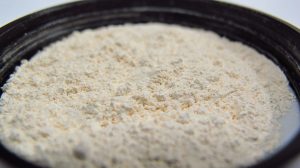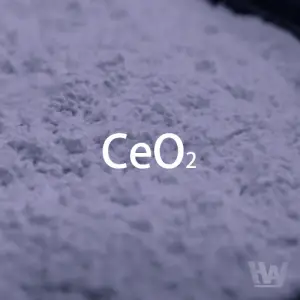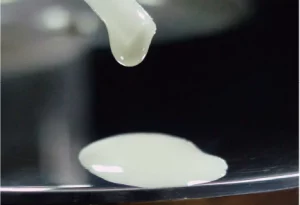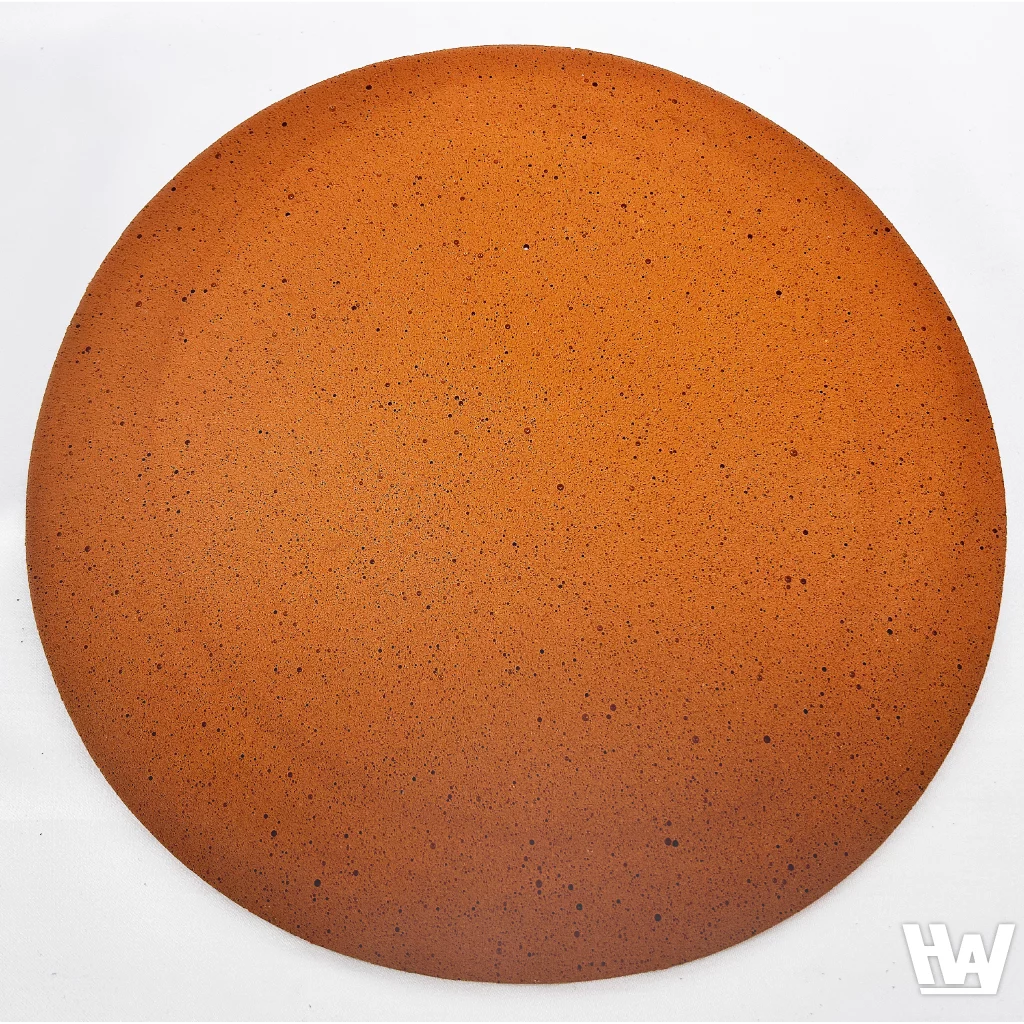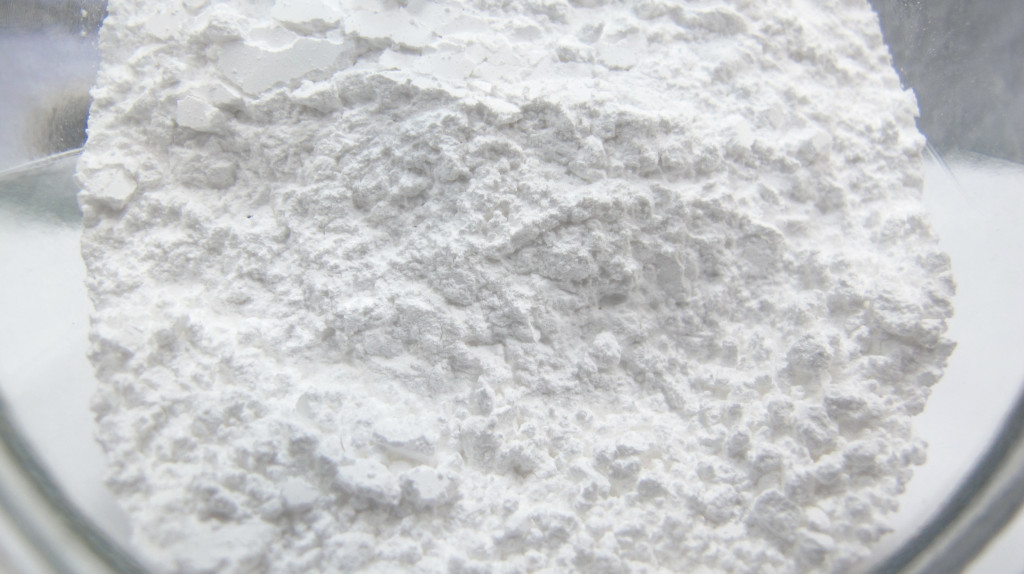Before we begin, if you have high-standard polishing requirements, the manufacturing process of cerium oxide will affect the polishing effect. If you have a specific process in mind, please mention it to Honway when ordering.
The Key to Improving Polishing Efficiency and Yield: An In-depth Analysis of Cerium Oxide Polishing Technology. The properties and mechanisms of cerium oxide polishing powder and polishing liquid, as well as their applications in high-precision glass, optical components, and other fields. We will explore the selection of different specifications and precautions for self-mixing to help you optimize your existing processes and achieve superior polishing results.
Table of Contents
What is Cerium Oxide?
Chinese Name: 氧化鈰
Chinese Alias: 氧化鈰(IV)、二氧化鈰、玻璃粉
English Name: Cerium Oxide
English Alias: Cerium(IV) Oxide, Ceric Oxide, Ceria, Cerium Dioxide
Chemical Formula: CeO2
Other: Insoluble in water and alkali, slightly soluble in acid. Cerium oxide is non-toxic, odorless, non-irritating, safe and reliable, with stable performance.
※ Detailed specifications available upon business inquiry, can be adjusted according to customer needs.
Cerium Oxide (CeO2) is an important rare earth oxide, mainly used for smelting cerium metal, as an additive in various materials, and for polishing. In polishing, it is mostly used for glass polishing, and some car glass polishing powder (for removing oil film) used in daily life also uses cerium oxide.
Since 1940, cerium-rich rare earth polishing powders have gradually replaced iron oxide (red iron) for glass polishing, becoming a critical material in the glass polishing process.
Compared with traditional polishing powder—iron oxide—rare earth polishing powder has the advantages of: 1. Fast polishing speed, 2. High surface finish, and 3. Long service life. It can also change the polishing quality and operating environment.
For example: If cerium oxide polishing powder is used to polish a lens, the amount of work that can be completed in 1 minute would take 30 to 60 minutes with iron oxide polishing powder.
Why Can Cerium Oxide Polish Glass? Will it Scratch Glass?
The possibly surprising answer is: what scratches the glass is unshed sand and soil, not the cerium oxide itself, which has a lower hardness than glass.
The polishing effect of cerium oxide lies in:
The excellent performance of cerium oxide in glass polishing utilizes the multivalent states of cerium and its easily convertible properties (the Ce(+3)/Ce(+5) redox reaction disrupts the silicate lattice) and the chemical reaction of “hydration.” Through chemical adsorption, the substances in contact with the polishing agent on the glass surface (including glass and hydrolyzed compounds) are oxidized or form complexes and are removed.
Simply put, it creates a softer layer on the glass surface, and this layer is abraded by the cerium oxide particles to achieve the polishing effect.
Cerium oxide has the same polishing properties for silica-based glass, crystals, calcium fluoride, and other crystals.
Differences in High and Low Cerium Oxide Polishing Powder Content
Due to the excellent performance of Cerium Oxide on silica glass and crystals, the classification of Cerium Oxide Grinding Solution is mainly based on the content of Cerium Oxide and the particle size of micropowder.
1. Low Cerium polishing powder
Low-ceria polishing powder generally contains about 50% CeO2, with the remaining 50% being La2O3, Nd2O3, Pr6O11, or alkaline fluorides such as LaOF, NdOF, PrOF. Due to the presence of praseodymium (Pr), its appearance is red or brownish-red, with the color deepening as the praseodymium content increases.
With technological advancements and the development and utilization of praseodymium, the praseodymium element in low-ceria polishing powder has been extracted, resulting in white low-ceria polishing powder products. This type of polishing powder is low in price, but its initial polishing ability is almost the same as that of high-ceria polishing powder, so it is widely used for polishing low-end glass products such as flat glass, picture tube glass, and spectacle lenses, but its service life is lower than that of high-ceria polishing powder.
2. High-Ceria Polishing Powder
The higher the cerium oxide content, the greater the polishing ability and the longer the service life, especially for long-term cyclic polishing of hard glass (such as quartz and optical lenses), it is best to use high-content cerium oxide polishing powder.
Differences Between Red and White Cerium Oxide Polishing Powder
he difference lies in whether it contains praseodymium.
| Color | White cerium oxide polishing powder | Red cerium oxide polishing powder |
| Praseodymium | Trace | Small amount |
| Lanthanum | Contains | Contains |
| Pricing | Lower | Higher |
| Differences | Higher cerium oxide content, fewer impurities Higher cerium oxide content, fewer impurities Gentle polishing effect, suitable for precision surface polishing | May contain a small amount of impurities surface finish Abrasive power may be stronger, suitable for removing obvious scratches or initial polishing (Praseodymium helps lanthanum and cerium oxide quickly reduce activity) |
Differences in Cerium Oxide Polishing Powder Manufacturing Processes
Cerium oxide powders extracted through different processes may have different polishing effects even if the particle size is the same!
Multiple extraction methods are provided at the end of this article for interested friends to understand, but for practical applications, we still recommend contacting Honway to connect with our specialists to find the best solution for you.
Here we briefly share that the extraction process greatly affects the final function of cerium oxide. When you use two cerium oxides with the same particle size but produced by two different processes, A and B, you will likely find that the lifespan of A is only half that of B. The money you originally thought you saved not only wasn’t saved but also increased the time cost, which is not worth it.
Or, your current process may not actually require cerium oxide with such high sharpness, and as a result of choosing the wrong product, the yield rate is low.
Product link:
Can I buy cerium oxide polishing powder and mix it into polishing liquid?
The answer is yes, but it may clump easily. If you need high-quality polishing, it is recommended that you buy pre-mixed ones.
How to mix: Cerium oxide + water. It is recommended to make it thinner. If you find that the grinding is not strong enough, then gradually increase it.
※Please wear gloves and a gas mask when mixing. Inhaling cerium-containing dust is harmful to the lungs and may cause occupational pneumoconiosis. If it accidentally comes into contact with skin and eyes, rinse immediately with running water.
※The working environment should have good ventilation conditions. This material should be stored in a ventilated and dry place.
Cerium Oxide Polishing Solution
Feature:
- The larger the particle size of cerium oxide, the greater the grinding force and the more suitable it is for harder materials; while glass applications tend to use finer polishing fluids.
- All cerium oxide particle sizes have a distribution problem. The average particle size or median diameter (D50) determines the polishing speed, while the maximum particle size (Dmax) determines the polishing accuracy.
- To achieve high precision requirements, the maximum particle size of the polishing powder must be controlled.
- The powder has good particle suspension properties, making it less likely to scratch the surface of objects. It can be used to polish optical glass, smartphone glass, and more.
Product Features:
- Moderately soft and hard, it does not scratch the surface of polished objects.
- The polishing liquid has good suspension performance and is not easy to settle.
Application range of cerium oxide powder/liquid
Used for glass additives, automotive exhaust purification catalysts, hydrogen storage materials, thermoelectric materials, cerium-tungsten electrodes, ceramic capacitors, piezoelectric ceramics, cerium silicon carbide abrasives, fuel cell raw materials, gasoline catalysts, some permanent magnet materials, ultraviolet absorbers, various alloy steels and non-ferrous metals.
Polishing Uses:
1. Polishing eyeglasses and glass lenses;
2. Optical lenses, optical glass, lenses, etc.;
3. Mobile phone screen glass, watch faces, etc.;
4. Liquid crystal displays, various LCD screens;
5. Rhinestones, hot fix stones (hairpins, diamonds on jeans), lighting balls (large chandeliers in grand halls);
6. Crystal handicrafts;
7. Polishing of some jade.
Manufacturing Process of Cerium Oxide
Product Link
Accessories for Cerium Oxide Powder/Liquid
Before using powder with accessories, please mix it with water to form a liquid.
※ If the glass surface has deep scratches (that cerium oxide cannot remove), sandpaper or diamond grinding sticks can be used to grind the scratches to a fine finish before using cerium oxide.
It is recommended to use with matching accessories for maximum effectiveness.
Manufacturing Process of Cerium Oxide
Synthetic Preparation Technology of Cerium Oxide (The following introduces several main manufacturing methods):
1 Chemical Precipitation Method
The chemical precipitation method is a common method for synthesizing cerium oxide. Its principle is to react a solution of soluble cerium salt (such as cerium nitrate, cerium chloride) with a precipitant (such as ammonium hydroxide, sodium hydroxide, potassium carbonate) to form a cerium-containing precipitate, and then convert the precipitate into CeO2 by calcination. For example, when using cerium nitrate and ammonium hydroxide, cerium hydroxide precipitate is first generated, and then cerium oxide is obtained by filtration, washing, and high-temperature calcination.
In the chemical precipitation method, the selected chemical precursors and precipitants have a significant impact on the particle size, morphology, and purity of the final product. Different reactants lead to different reaction pathways and the formation of intermediate compounds, which in turn affect the nucleation and growth process of cerium oxide particles. Therefore, by precisely controlling the type and concentration of precursors and precipitants, the final performance of cerium oxide can be regulated.
2 Hydrothermal Method and Solvothermal Method
The hydrothermal method and solvothermal method are methods for preparing cerium oxide by reacting cerium precursors in an aqueous (hydrothermal) or non-aqueous (solvothermal) solvent in a closed container under high temperature and high pressure. In the hydrothermal method, for example, cerium nitrate is mixed with sodium hydroxide to form an ionic solution, and then the precipitate is placed in a hydrothermal reactor and reacted under high temperature and high pressure for a period of time to finally obtain cerium oxide. The solvothermal method can utilize organic solvents to better control particle growth and morphology.
Due to the strict control of the reaction environment, the hydrothermal method and solvothermal method can usually better control the crystallinity, particle size, and morphology of cerium oxide. High temperature and high pressure conditions help to form more perfect crystal structures. By adjusting the reaction temperature, pressure, reaction time, and the solvent used, the microstructure of cerium oxide can be precisely controlled.
3 Oxalate Precipitation Method
The oxalate precipitation method utilizes the low solubility of cerium oxalate to selectively precipitate cerium by adding oxalic acid and ammonia water to a solution of cerium chloride or cerium nitrate, and then calcining the oxalate to obtain CeO2. Controlling the pH value during the precipitation process is crucial for obtaining a high-purity cerium oxalate precursor.
The oxalate precipitation method is an effective method for obtaining high-purity cerium oxide because it can selectively precipitate cerium oxalate. The low solubility of cerium oxalate allows cerium ions to be effectively separated from the solution, thereby reducing the introduction of impurities.
4 Sol-Gel Method
The sol-gel method involves forming a gel network from a solution containing a cerium precursor (such as cerium nitrate) through hydrolysis and polycondensation reactions, and then obtaining CeO2 nanoparticles after drying and calcination. Using surfactants or polymers as stabilizers or capping agents can control particle size and prevent agglomeration. For example, polyacrylic acid (PAA) can be used as a capping agent.
The sol-gel method is a versatile synthesis method that can produce cerium oxide with controllable particle size, high uniformity, and the ability to be doped or functionalized. By controlling the sol-gel process at the molecular level, the microstructure of the material can be finely adjusted.
5 Hydrothermal Decomposition Method
The hydrothermal decomposition method is a method for hydrolyzing an aqueous solution of cerium salt (such as cerium sulfate, cerium ammonium nitrate) at a high temperature (120-240°C) to form cerium oxide particles. By controlling the process parameters, monodisperse particles with high thermal stability can be obtained.
The hydrothermal decomposition method is particularly suitable for preparing cerium oxide with high thermal stability and controllable particle morphology, suitable for high-temperature applications such as catalysis. High temperature helps to form stable crystal structures.
6 Spray Pyrolysis Method
The spray pyrolysis method is an aerosol decomposition method that sprays a solution containing a cerium precursor into a high-temperature reactor. After the solvent evaporates, the precursor decomposes to form cerium oxide particles or thin films. Process parameters such as temperature, precursor concentration, and residence time significantly affect the properties of the product.
The spray pyrolysis method provides a continuous and scalable method for producing cerium oxide powders and thin films with controllable particle size and morphology by adjusting process parameters. The rapid decomposition of the precursor in the aerosol phase helps to form fine and compositionally uniform particles.
7 Mechanical Method (such as Ball Milling)
Ball milling is a physical technique that reduces the size of cerium oxide particles to the nanometer scale through mechanical grinding. This method is relatively low in cost and simple, but it may introduce impurities or cause agglomeration.
Ball milling provides a relatively simple and economical route for producing nano-sized cerium oxide, but careful control is needed to minimize contamination and agglomeration. The mechanical forces involved can lead to particle fracture and size reduction.
8 Emerging Green Synthesis Methods
Green synthesis methods utilize biological resources such as plant extracts, fungi, or bacteria as reducing agents and stabilizers to synthesize cerium oxide nanoparticles, providing a more environmentally friendly alternative to chemical methods. These methods aim to reduce the use of harmful chemicals and high energy consumption.
Green synthesis methods are increasingly receiving attention due to their potential for lower environmental impact and better biocompatibility, especially in biomedical applications. The use of natural reducing agents and stabilizers can produce nanomaterials with lower toxicity and better biocompatibility.
Cerium Oxide Production Steps
1 Raw Material Acquisition and Preparation from Ore
The production of cerium oxide typically begins with cerium-containing minerals. After initial processing, chemical extraction is performed to obtain a mixture of rare earth elements.
Cerium is then selectively separated from other rare earth elements using methods such as solvent extraction, precipitation, or ion exchange. Oxidation followed by pH adjustment is a common method for separating cerium. Commonly used cerium precursors include cerium carbonate, cerium hydroxide, and cerium oxalate.
2 Calcination Process: Chemical Transformation and Parameters
The separated cerium compounds (such as carbonates, hydroxides, oxalates) are placed in a furnace and heated at high temperatures (typically 600-1000°C). This process, called calcination, converts the cerium compounds into cerium oxide (CeO2) by removing volatile components (such as water, carbon dioxide) and promoting solid-state reactions.
The temperature and duration of calcination are key parameters affecting the crystallinity, particle size, and surface area of the final cerium oxide product.
The calcination step is a critical control point in industrial production. By precisely managing temperature and atmosphere, the basic properties of the cerium oxide powder can be adjusted. The thermal energy provided during calcination drives the chemical transformation and influences the microstructure of the material.
3 Purification Techniques Based on Intended Use
Depending on the required grade and application, the obtained cerium oxide may need to undergo further purification steps to remove any residual impurities.
Purification methods include chemical treatment (such as acid or alkali leaching), precipitation, filtration, and advanced techniques such as solvent extraction or ozone oxidation. For high-purity applications, multiple purification stages may be required.
In industrial production, appropriate purification techniques must be implemented after the initial calcination step to achieve the purity levels required for specific applications. Impurities can significantly affect the performance of cerium oxide in sensitive applications such as electronics and optics.
4 Large-Scale Control of Particle Size, Morphology, and Surface Area
Depending on the intended use, further processing is carried out to achieve specific particle size distributions and morphologies.
Techniques such as grinding, milling, controlled precipitation, or hydrothermal treatment are employed. For polishing applications, a specific particle size range (micron to sub-micron) is crucial. The surface area can be controlled by adjusting synthesis parameters and post-treatment conditions.
Industrial processes include specific steps to control the physical properties of cerium oxide, such as particle size, morphology, and surface area, as these properties are critical determinants of its performance in various applications. The effectiveness of cerium oxide as a polishing agent, catalyst, or electronic material is directly related to its physical properties.
5 Quality Control Measures and Standards
Ensuring the quality and consistency of the produced cerium oxide involves strict quality control measures, including analysis of purity, composition, particle size distribution, density, moisture content, pH value, and zeta potential. Advanced spectroscopic techniques, such as X-ray fluorescence spectroscopy (XRF) and inductively coupled plasma emission spectroscopy (ICP), are used for chemical composition analysis. Methods such as laser diffraction and dynamic light scattering (DLS) are used to determine particle size and distribution.
In industrial cerium oxide production, stringent quality control protocols are essential to ensure that the final product meets the specifications required for its intended applications, ensuring consistent performance and reliability. The quality of cerium oxide directly affects the performance and lifespan of the products in which it is used.
Different Cerium Oxide Grades and Applications: Comparison of Key Manufacturing Parameters and Resulting Properties
| Application | Required level (if applicable) | Main manufacturing method | Typical purity requirements | Typical particle size range (nm) | Key process parameters | Main income nature |
| Polishing | Polishing grade | Precision precipitation, calcination, grinding, classification | >99.9% | Dozens to hundreds | Precipitation conditions, calcination temperature, grinding time and media | Very fine particle size, good uniformity, moderate hardness |
| catalyst | Catalytic Grade | Coprecipitation, hydrothermal synthesis, sol-gel, impregnation | 99-99.9% | A few to dozens | Precursor type, calcination temperature and atmosphere, doping elements and concentration | High surface area, high Ce3+/Ce4+ ratio, strong oxygen storage capacity |
| electronic | Electronic grade, high purity | Sol-gel coating, controlled thermal decomposition, hydrothermal synthesis | >99.99% | Tens to hundreds (thin film) | Precursor type, reaction temperature and time, atmosphere control, doping elements | Specific dielectric constant, conductivity, crystal structure |
| Biomedical Science | Biomedical Grade | Green synthesis, sol-gel, hydrothermal synthesis, surface modification | >99.9% | A few to dozens | Type and concentration of bioreductant, reaction temperature and time, surface modification | Good biocompatibility, antioxidant activity, specific surface charge |
Cerium Oxide Precautions
General Precautions:
- Carefully Read the Safety Data Sheet (SDS): Before using cerium oxide, be sure to read the safety data sheet provided by the supplier in detail to understand its potential hazards, safe handling measures, and emergency procedures.
- Avoid Inhalation of Dust: Cerium oxide may exist in powder form, and inhalation of dust may irritate the respiratory tract. Ensure good ventilation during operation, or wear appropriate respiratory protective equipment (such as a mask).
- Avoid Contact with Skin and Eyes: Cerium oxide may cause irritation to the skin and eyes. Wear protective gloves and goggles during operation. If accidental contact occurs, rinse immediately with plenty of water.
- Thorough Cleaning After Operation: After handling cerium oxide, be sure to wash your hands and any clothing that may have come into contact with it thoroughly.
- No Eating or Smoking in the Workplace: Avoid eating and smoking in areas where cerium oxide is handled to prevent accidental ingestion or inhalation.
- For Laboratory or Industrial Use Only: If it is reagent-grade cerium oxide, do not ingest it; it is for laboratory or industrial use only.
- Storage Precautions: Store cerium oxide sealed in a dry, cool, and well-ventilated place, avoiding moisture absorption and caking or contamination by impurities. Avoid storing with incompatible substances.
- Waste Disposal: Dispose of cerium oxide waste in accordance with local regulations.
Precautions for Specific Uses (Taking Polishing as an Example):
- Choose the Appropriate Particle Size: Select cerium oxide polishing powder with the appropriate particle size based on the hardness of the material being polished and the required polishing precision. Larger particle sizes have stronger abrasive power and are suitable for harder materials or rough polishing; finer particle sizes are suitable for fine polishing to obtain a higher surface finish.
- Check Before Use: Ensure that the polishing powder is dry and free of contamination to avoid affecting the polishing quality or scratching the workpiece.
- Flat Surface Polishing: Maintain flat operation during polishing and avoid using the sides to ensure uniform polishing.
- Keep Moist: During the polishing process, it is necessary to continuously replenish water or cerium oxide polishing liquid to avoid overheating and excessive dust generation, and to help suspend the polishing powder.
- Avoid Over-Polishing in the Same Position: Prolonged or excessive force polishing in the same position may cause localized overheating or unevenness.
- Cleaning After Polishing: Clean the workpiece immediately after polishing to remove residual polishing powder and avoid contamination or re-scratching.
- Use Appropriate Polishing Pads: Choose polishing pads with appropriate materials and hardness according to the polishing requirements to achieve the best results. Harder wool pads are suitable for stronger abrasion, and softer materials are suitable for fine polishing.
- Use of Power Tools: If using power tools for polishing, adjust the appropriate speed and pressure according to the requirements of the tool and the workpiece. For glass scratch removal, low-speed polishing is recommended.
- Large Area Scratches: For large area or deep scratches, it is recommended to chat with us or try using other polishing products (such as sandpaper, diamond grinding sticks, etc.).
1.https://www.marketresearch.com/Global-Industry-Analysts-v1039/Cerium-Oxide-Nanoparticles-40761227/
2.https://www.chemicalbook.com/NewsInfo_17474.htm
We offer customized adjustments to the grinding process, tailored to meet processing requirements for maximum efficiency.
After reading the content, if you still don’t know how to select the most suitable option,
Feel free to contact us and we will have specialist available to answer your questions.
If you need customized quotations, you’re also welcome to contact us.
Customer Service Hours: Monday to Friday 09:00~18:00 (GMT+8)
Phone: +8867 223 1058
If you have a subject that you want to know or a phone call that is not clear, you are welcome to send a private message to Facebook~~
Honway Facebook: https://www.facebook.com/honwaygroup
You may be interested in…
[wpb-random-posts]


